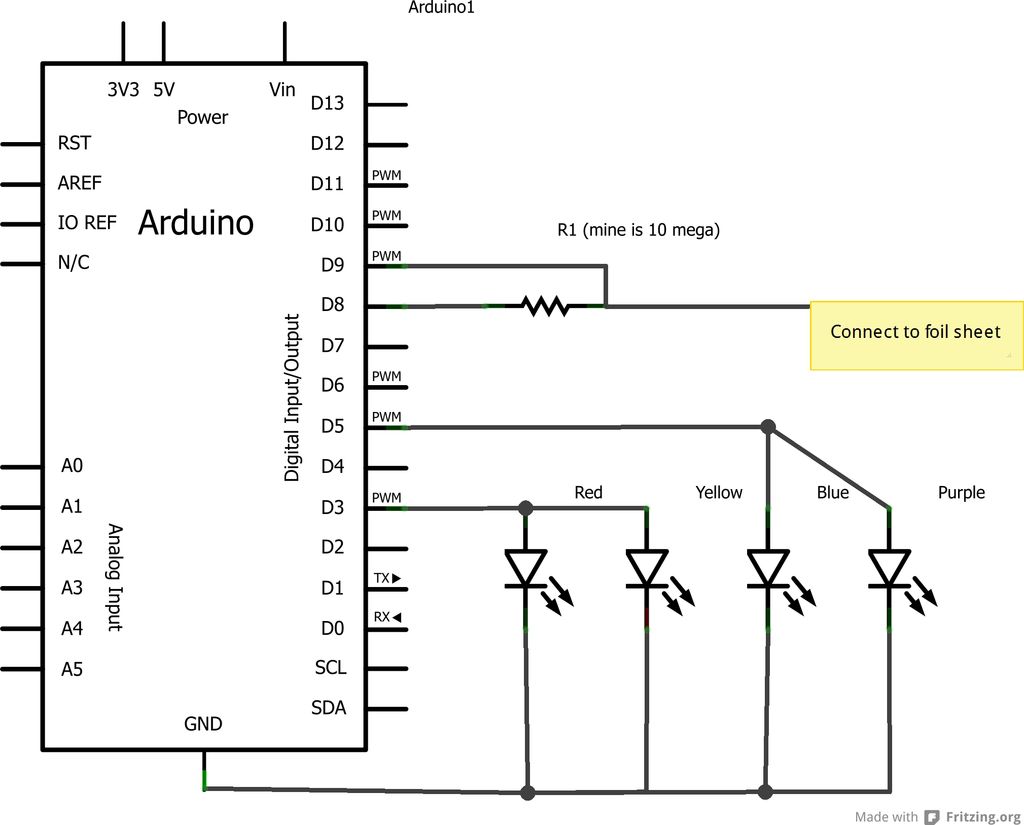This was my very first arduino project. Its great for beginners. Fade the color or the lights my moving your hands near it. It fades from a pretty purple blue to a firey red-orange. Its was SUPER easy to build, not to hard to write the code, and its really impresses people! I gave it to my mother for christmas, and it was a big hit. Watch the video to see it in action! I apologize for the poor quality, I will try to take more pictures.
All you need is:
Arduino
wires
high resistor (mine is 10 mega ohms)
leds
tin foil or other conductive material
I build a housing for mine using an empty salsa jar and a toilet paper tube that happened to be the perfect size to snap together like legos.
Step 1: Code and Circuit
Update: added Fritzing diagram and schematic (Its a great program, check it out frizting.org)
/*this code is a cap. sensor that fades between 2 leds
* set up: pin 8 > high resistor > one wire to foil, one to pin 9
*Led set up pin 2>resistor>led>grnd
*based on http://arduino.cc/forum/index.php/topic,8609.0.html
* ajust if statment to fit resistor, currently using a 10Mohm
*/
Once it is set up, run the code and open the serial monitor. Move the set up away from your computer to help diminish interference Note what numbers are being out put when nothing is near the foil sensor, also note what it is when your open palm is extremely close to the sensor.
Change the int low cap to just above the number output when nothing is near your sensor.
Change high cap to the number output when you are almost touching the sensor.
You will have to adjust these numbers often to “calibrate” the light. Many factor interfere with the readings to it needs to be set up whenever it is moved.
Step 2: Housing
To defuse the light coming through the jar I “mod-podged” toilet paper to the inside of the jar. To do this I mixed a little bit of elmers glue or mod-podge with just a tiny bit of water, and painted it onto the inside of the jar. Then I pressed on ripped up scraps of white tissue paper (actually just 1 ply toilet paper).
wires
high resistor
For more detail: Magic Light Capacitance Sensor using an Arduino


